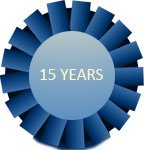The five primary contributors to accidents include machinery failure, excessive speed, improper lookout, operator inexperience, and operator inattention. The same can be said for flight travel. Licensing programs promote safety in aviation by training aspiring pilots on aircraft systems, communications, weather, navigation, and different safety procedures.
While obtaining a private pilot’s license is worth the effort, it takes work. Before investing your time and money in this endeavor, conduct your research to ensure it’s something you truly want. Here are six things to know about getting your pilot’s license.
1. Ensure You’re Eligible
This step may seem small, but it can save you valuable time. Although you can begin training at 15, you must be 17 to take the exam and obtain your certificate. You must comprehensively understand the English language, including reading and writing. Although it’s not necessary at first, it’s a good idea to look into your medical certificate early to ensure you will avoid problems later.
2. Find a Flight School or an Instructor
Think about your long-term aviation goals. If you want the freedom to fly close to your home, a Certified Flight Instructor will provide you with the training you need. After receiving your Recreational Pilot Certificate, consider flight school to further your training.
Roughly 33,600 private schools existed in the United States between 2013 and 2014. This includes private flight schools. Private institutions offer more personalized attention as they typically have smaller class sizes. The quality of instruction in private flight schools is also greater as they can access modern training equipment and facilities. The best route for you depends on your budget, needs, and time.
3. Grounds School
PPL ground training introduces key aviation principles. It builds on aeronautical knowledge in radio communication procedures, Federal Aviation Regulations, and aerodynamics. To complete your ground school, you can choose between instructor lessons or a home-study course. Note that there are two types of pilot schools, each adhering to a different section of the FARs. Part 141 schools are required to offer a minimum of 35 hours of ground school, while Part 61 schools don’t have minimum ‘ground’ hours. In either case, taking up an online course is a smart move.
4. Costs
The time and money commitment required to get a pilot’s license deters many people. However, consider it an investment in your future. Obtaining a private pilot license costs between $7,000 and $15,000, but you can spread out training over several months to alleviate the financial burden. A pilot’s license never expires, so getting one is a great investment in your future.
5. Skill Test
You must complete a skill test in the applicable aircraft type after your training to show that you can perform the procedures and maneuvers you’ve been taught as a pilot in command. You need to have had some training in flying the same aircraft or class that you’ll use for your skill test. You won’t have to worry about scheduling a skill test since your flying school will do it when they feel you’re ready.
6. Military Flight Training
Becoming a military pilot requires specialized flight training offered by the military. These training programs provide aspiring military pilots with the knowledge, skills, and experience to fly military aircraft. When you enroll in this training program, you’ll get to fly the UH-60 Black Hawk helicopter, which is the United States Army’s primary medium-lift air assault and utility transport aircraft. Military flight training programs are intensive, running for several months to years. They’re also highly selective and competitive.
Obtaining a pilot license is a great investment in your future. The aviation industry offers aspiring pilots plenty of job and business ownership opportunities. If you’ve been considering a career as a pilot, you’ll be happy to know it’s profitable.



